The schools taking a stand against too much sitting down
- Published
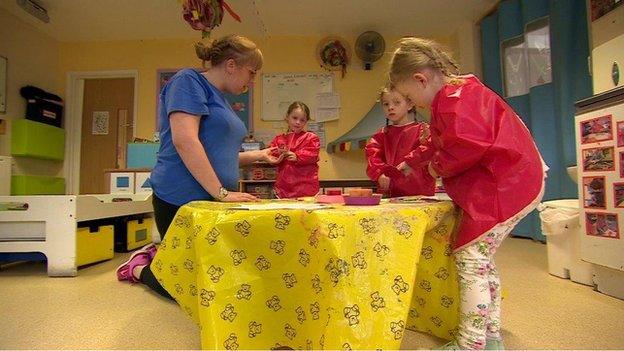
No chairs for art at Old School House nursery
At the Old School House nursery near Newmarket in Suffolk, three- and four-year-olds are beginning their battle against the diseases of old age.
They stand to print animal shapes onto white paper in brightly coloured paint and jump to their feet at certain points in their morning story.
It is part of a programme called Active Movement , externaldevised by Dr Mike Loosemore, a researcher from University College London, who has led research into the diseases caused by a sedentary lifestyle.
'Tsunami of inactivity'
Dr Loosemore warns that a "tsunami of inactivity" is engulfing Britain and already leading to dramatic increases in largely avoidable diseases.
He is to present the findings of a pilot study in schools to the conference of the National Association of Day Nurseries on June 12th.
The school programme is not about the dangers of missing out on the recommended 150 minutes a week of moderate exercise.
It is focused on the separate risks that research has shown are associated with the simple act of sitting for more than about twenty minutes at a stretch, as millions do each day at work and at home.
Even a thirty minute run after work can't repair the damage caused by hours of sitting.
"Sitting can create inflammatory cytokines (chemicals used by cells to signal to each other) which damage the lining of the arteries and the brain, leading to heart attacks and strokes and some cancers," says Dr Loosemore.
"We know it can lead to diabetes and even Alzheimers."
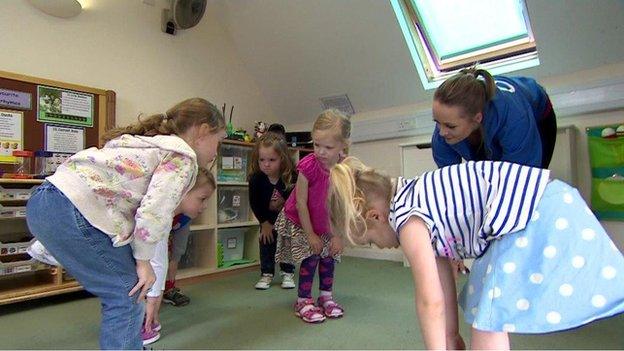
Adults have proved reluctant to ditch the sitting habit.
Some researchers believe it has become worse in the age of screen-based social media and computer games.
But children represent an opportunity to bring about a change of heart, and schools are the ideal place to teach a new awareness of the dangers of a sedentary life.
Dr Loosemore uses the characters Sid, who sits, and Stan, who stands, to personalize for children the critical choice between sitting and standing.
Sid has a lazy looking cat called Tiggy while Stan has an energetic dog called Max.
Children at the Old School House are well aware of the benefits of "being Stan" at every opportunity.
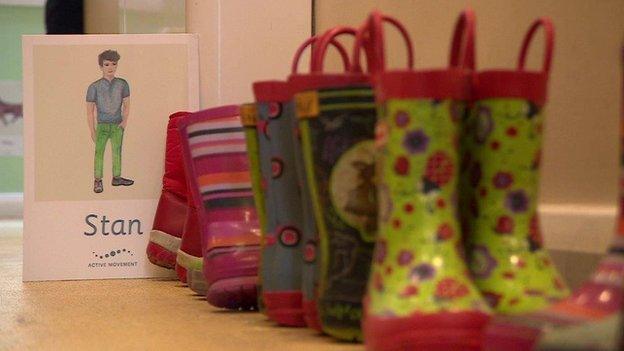
It is a formula that has caught on at Abberley Parochial Primary School in Worcestershire too.
Pupils stand up to answer a question in class or when the head teacher enters the classroom with a visitor.
Standing has been given a positive spin - anyone celebrating a birthday is allowed to stand up whenever they want to.
Pedometers
Champions from each of the school's houses wear pedometers, jigging energetically all day as they compete to amass the most steps.
During assembly the school is divided into two, with the children in each half of the hall alternating in jumping to their feet in time with successive lines of the hymn.
Pupils agree that such innovations have injected a buzz about activity into school life.
"Once, people used to sit around, now you hardly ever see them sitting," says Josh, a top-year pupil.
Molly, who is also in her final year, has noticed a new social pressure to be active.
"If there was someone who was jogging because they were really fit, it would be really embarrassing if you were in the car eating crisps," she says.
Becky has taken to heart the reasons for avoiding long periods of sitting, citing the danger of diseases such as diabetes.
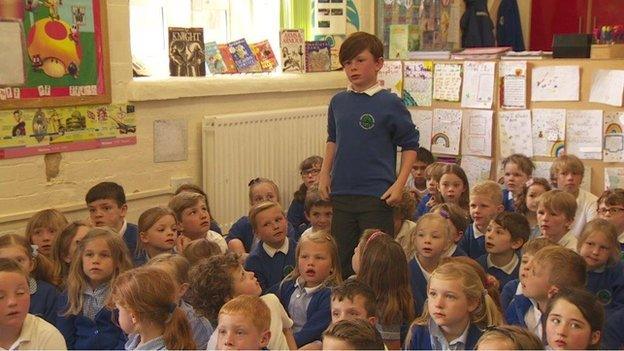
Children stand to answer questions at Abberley Parochial Primary in Worcestershire
"If you're sitting down your muscles are all relaxed and you droop down, whereas if you're standing you're holding yourself up, and you have better posture."
Abberley Parochial Primary's head teacher, Anne Wylie, says that movement, far from displacing study time, has made it more effective.
"It's been known for a long while that activity improves children's energy," she says.
"But we've found it has also helped them to concentrate, and made them more focused."
But the Active Movement programme is not principally designed to make already largely fit children into athletes.
Its aim is to instil lifelong habits and create a generation of children who will work with their bodies to stay healthy.
Sam, a younger pupil, is one of those taking the long view.
"If you stand, then your muscles grow fast and stronger and you can be fit enough to do what you want in life," he says.
Role models
The programme envisages energetic participation by teachers and parents to act as role models.
Several of the children describe their efforts to raise recalcitrant parents to their feet, for example to jog on the spot during the advertisements on television.
It is in a multitude of small actions that the risks of sitting too long can be reduced.
Stef Johnson, a senior nursery nurse at the Old School House nursery, says she is taking part in a fun run this month.
"I now park further away and challenge myself with a power walk every morning and every evening," she says.
"And if I want to use the lavatory I go to the one upstairs."
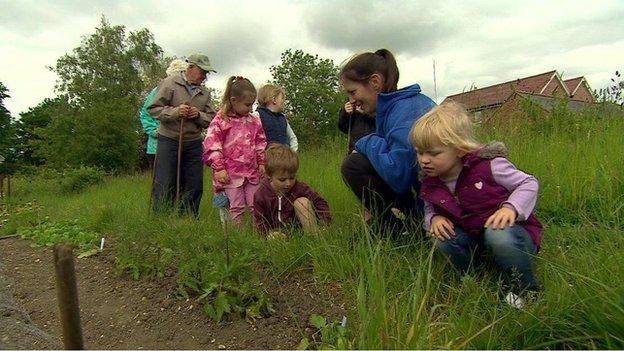
Moving lessons: pensioners accompany toddlers on nature walk
Another aim is that active movement should spread outside the nursery to the village around it.
A class of four- and five-year-olds accompanies elderly villagers on walks to identify plants and birds, clutching the hands of companions some 75 years their senior.
Most of this chatty crowd can expect to live considerably longer than their elderly friends.
But although life-spans are increasing, scientists predict that a growing proportion of them will be blighted by chronic, disabling, diseases - piling crippling costs onto the health service.
If the tots inspecting radish plants in the village allotment are to avoid this fate, they need to master the art of continual locomotion as early as possible.
- Published27 March 2015
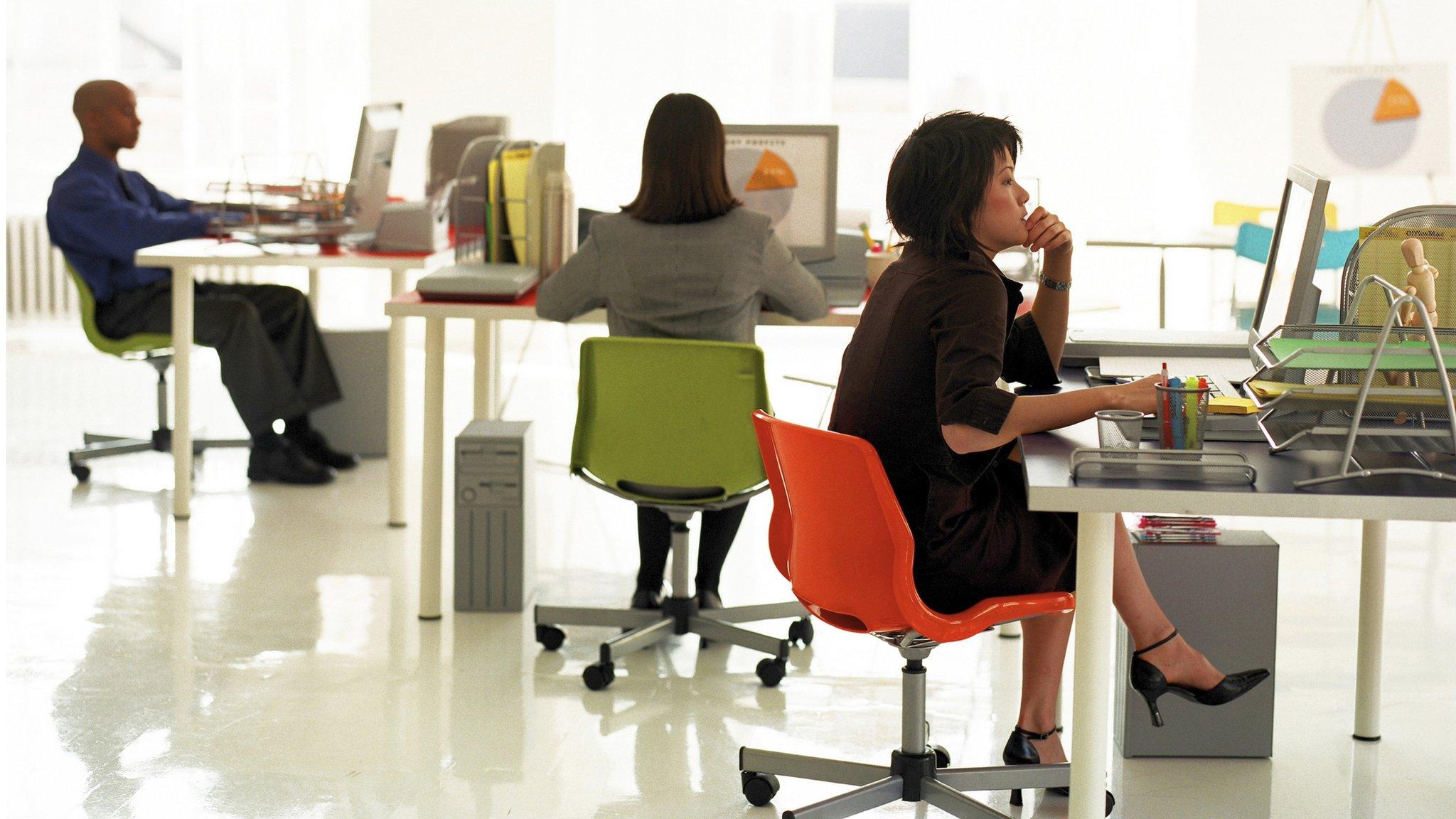
- Published9 January 2013

- Published15 October 2012

- Published18 July 2012